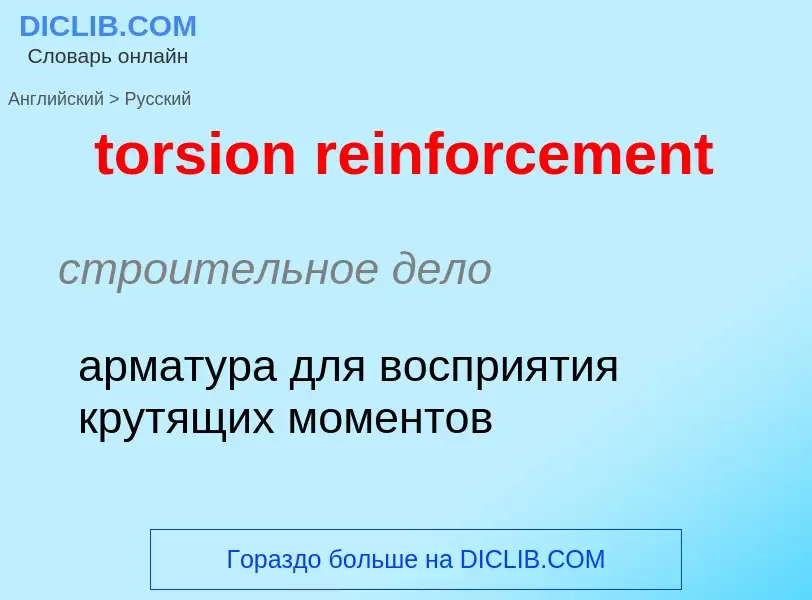Перевод и анализ слов искусственным интеллектом ChatGPT
На этой странице Вы можете получить подробный анализ слова или словосочетания, произведенный с помощью лучшей на сегодняшний день технологии искусственного интеллекта:
- как употребляется слово
- частота употребления
- используется оно чаще в устной или письменной речи
- варианты перевода слова
- примеры употребления (несколько фраз с переводом)
- этимология
torsion reinforcement - перевод на русский
строительное дело
арматура для восприятия крутящих моментов
общая лексика
негативное подкрепление
медицина
отрицательное подкрепление
строительное дело
рабочая арматура, воспринимающая усилия от отрицательных изгибающих моментов (в зоне промежуточных опор)
общая лексика
арматурный
армирующий
упрочняющий
усиление
усиливающий
строительное дело
армирование (бетона)
усиление (конструкций)
арматура
[ri:in'fɔ:smənt]
общая лексика
подкрепление
усиление
арматура
армирование
армировка
укрепление
упрочнение
строительное дело
элемент жесткости
арматура (железобетона)
армирование (строительных конструкций)
существительное
общая лексика
усиление
укрепление
армирование
военное дело
подкрепление
пополнение
строительное дело
арматура
специальный термин
закрепление (условного рефлекса, навыка; особ. системой поощрений)
система поощрений (особ. подопытного животного)
медицина
подкрепляющий раздражитель
Википедия
In differential geometry, the notion of torsion is a manner of characterizing a twist or screw of a moving frame around a curve. The torsion of a curve, as it appears in the Frenet–Serret formulas, for instance, quantifies the twist of a curve about its tangent vector as the curve evolves (or rather the rotation of the Frenet–Serret frame about the tangent vector). In the geometry of surfaces, the geodesic torsion describes how a surface twists about a curve on the surface. The companion notion of curvature measures how moving frames "roll" along a curve "without twisting".
More generally, on a differentiable manifold equipped with an affine connection (that is, a connection in the tangent bundle), torsion and curvature form the two fundamental invariants of the connection. In this context, torsion gives an intrinsic characterization of how tangent spaces twist about a curve when they are parallel transported; whereas curvature describes how the tangent spaces roll along the curve. Torsion may be described concretely as a tensor, or as a vector-valued 2-form on the manifold. If ∇ is an affine connection on a differential manifold, then the torsion tensor is defined, in terms of vector fields X and Y, by
where [X,Y] is the Lie bracket of vector fields.
Torsion is particularly useful in the study of the geometry of geodesics. Given a system of parametrized geodesics, one can specify a class of affine connections having those geodesics, but differing by their torsions. There is a unique connection which absorbs the torsion, generalizing the Levi-Civita connection to other, possibly non-metric situations (such as Finsler geometry). The difference between a connection with torsion, and a corresponding connection without torsion is a tensor, called the contorsion tensor. Absorption of torsion also plays a fundamental role in the study of G-structures and Cartan's equivalence method. Torsion is also useful in the study of unparametrized families of geodesics, via the associated projective connection. In relativity theory, such ideas have been implemented in the form of Einstein–Cartan theory.


